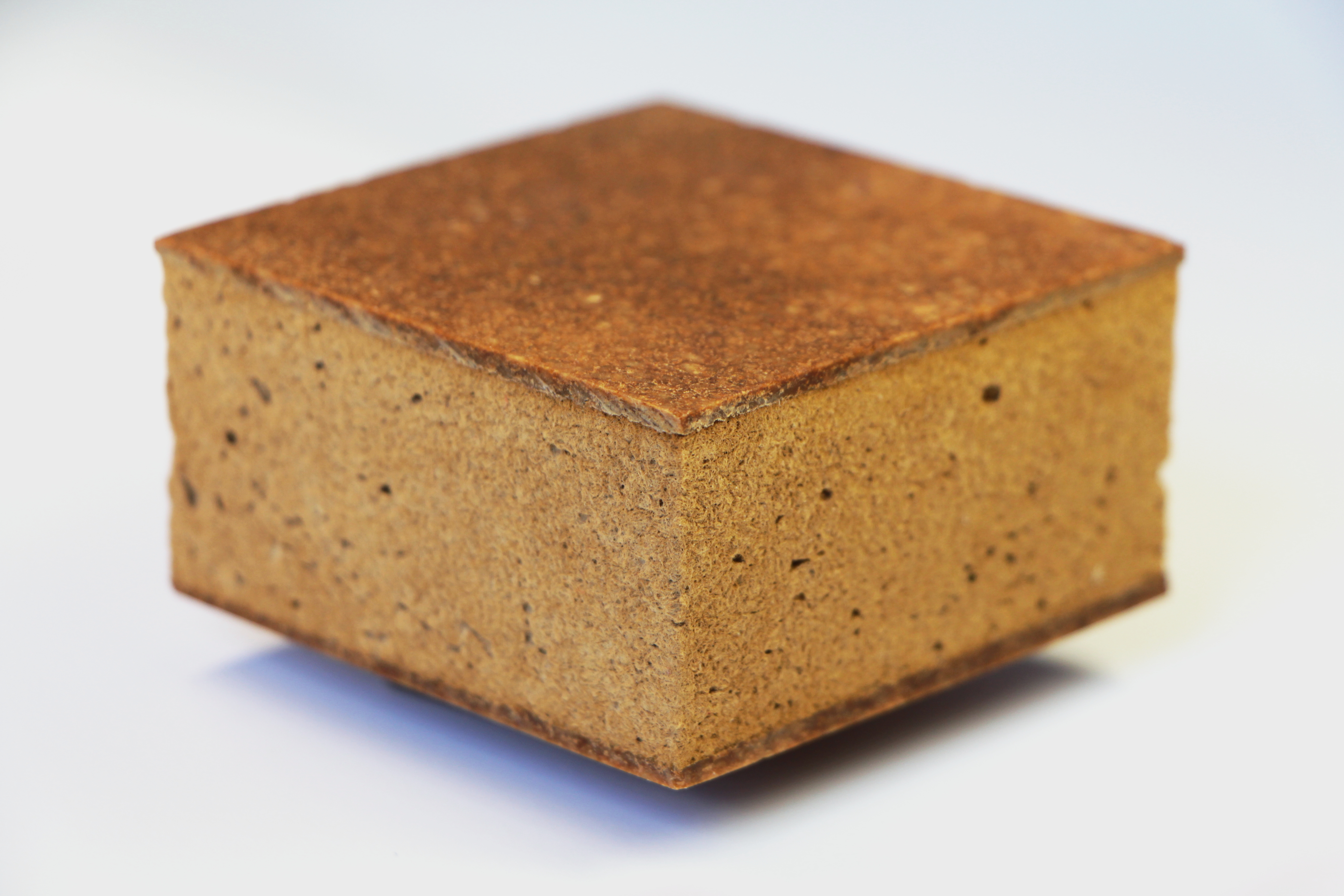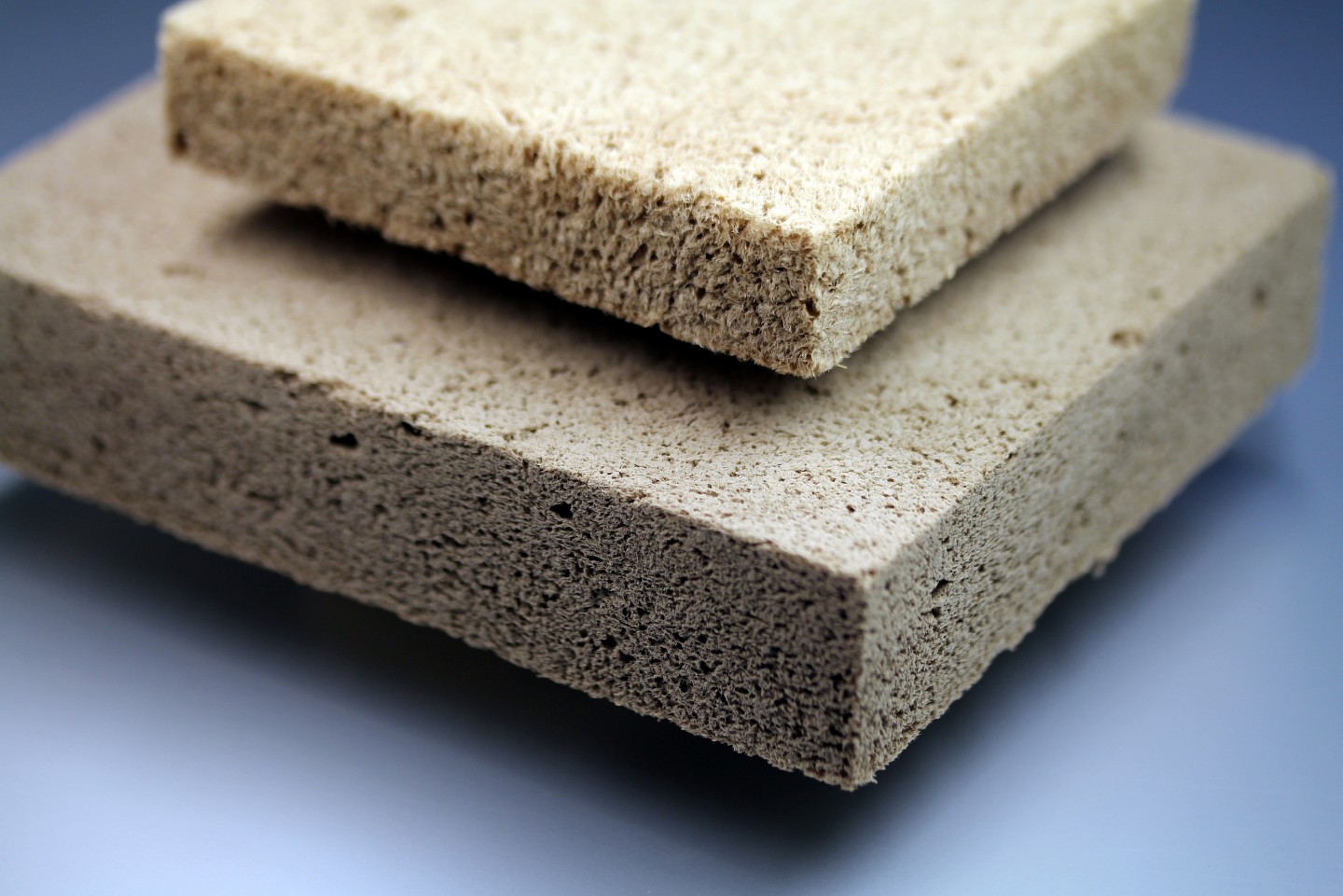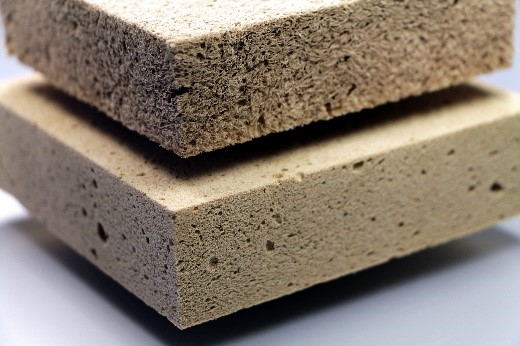Processes for the development of modified wood foams



The Fraunhofer WKI has developed a new natural lightweight product, which is called wood foam (Fig. 1). This pressure-resistant foam is free from any synthetic binders. The cohesion is achieved by activating the wood’s own binding forces during the manufacturing process. This innovative material has generated special attention within the various industrial branches. Currently, the institute intensively focusses on continuing the development of the foams and on process engineering issues regarding the industrial production of the material. Therefore, the project contents for ProFest will be complemented with this forward-looking subject.
Additionally to the pure wood foams developed to date, further material options by the development of modified wood foam materials shall be investigated within this project. Wood foams free from additives reveal a high pressure resistance and are very rigid and not flexible.
The automotive sector has identified a supportive application for wood foam in the field of upholstery, which is only feasible if the foam provides flexible properties. By means of modification, the development of a wood foam with flexible properties appears possible.
Main focuses of the project:
- Development of a flexible wood foam
- Identification of new applicabilities
- Optimization of properties of the flexible wood foam for specific applications
- Process development
- Preparation of a demonstrative model
Project results:
- Development of a flexible wood foam by addition of natural latex
- Densities around 100kg/m³
- Flexible wood foam from 100% bio-based raw materials
- Process developed
- Demonstrative model of a headrest
 Fraunhofer Project Center Wolfsburg
Fraunhofer Project Center Wolfsburg